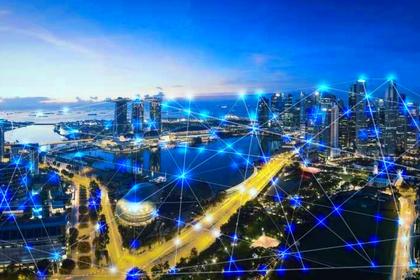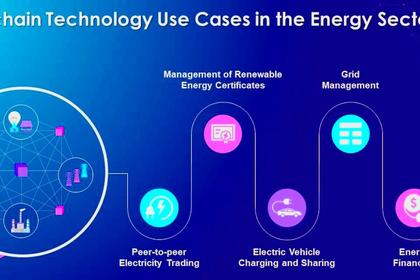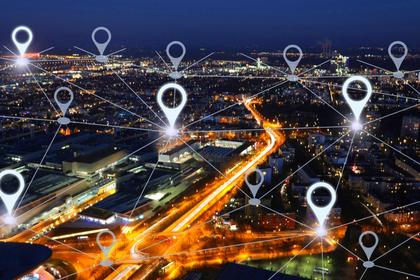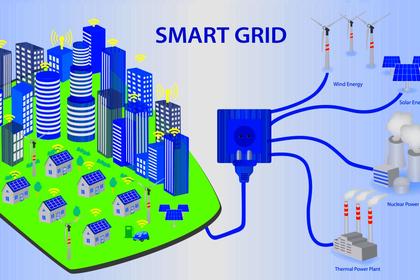
PROBLEMS OF VPP DEVELOPMENT

By FLORIAN KOLB Chief Commercial Officer & General Manager Energy, Intertrust Technologies Corporation
ENERGYCENTRAL - Sep 18, 2023 - In the energy scene the concept of Virtual Power Plants (VPPs) and Aggregators has gained significant attention since the accelerated rise of renewables, electric vehicles, and heat pumps.
A Virtual Power Plant is a technology/software-driven approach to energy generation, distribution, and management. It optimizes the use of smaller, decentral energy resources considering the (real-time) overall situation of the electrical energy system (energy prices/costs, demand, supply, grid utilization, weather etc.) - of a region or country - at any given point in time. A VPP allows decentral energy asset owners (B2B/SME/B2C) to create additional income opportunities or avoid energy (procurement) costs versus the ‘do nothing’ alternative.
There are also significant challenges for VPPs: given the extensive use of operational technologies (OT) (hardware and software monitoring and controlling electrical processes) as well as public and semi-public communication and data infrastructures, VPPs are highly exposed to cyber & data security risks. VPPs therefore increase the threat surface for the energy industry exponentially (e.g. denial-of-service attacks, false data injection, tampering, and more). Therefore, effective cyber and data security strategies for VPPs are required and countermeasures must be implemented.
Benefits of Virtual Power Plants
Decarbonization & Enhanced Grid Reliability
VPPs promote decarbonization and the use of renewable energy and reduce the reliance on fossil fuels. They distribute energy generation across a network of decentralized resources, making the grid more resilient. This distributed approach can help minimize the impact of power outages and improve overall grid stability.
Driven by the electricity (renewables, storage), mobility (integration of electric vehicles), and heating transition (integration of heat pumps), grid capacity bottlenecks will become the ‘new normal’. VPPs can (partly) solve this problem via efficient integration of flexible energy assets delivering balancing energy, ancillary services and more to the grid.
Efficiency
Virtual Power Plants optimize the use of energy resources by aggregating and dispatching them based on real-time demand and market conditions. VPPs ensure that energy is generated and utilized efficiently. They support integration of intermittent renewables, stabilizing the energy system.
Demand-Side Flexibility, Cost Optimization
Virtual Power Plants enable demand-side flexibility, allowing participants to adjust their supply or demand in response to price signals and/or grid conditions. This helps to lower energy bills and reduces the need for expensive grid extensions or high-cost peak capacity. In addition, energy asset owners can generate additional income via bilateral (OTC), wholesale market or the ancillary services market deals.
Security and Business Challenges
Virtual Power Plants fully rely on IoT devices, software, and communication technologies and therefore are heavily exposed to cyber & data security risks and vulnerabilities. Given the decentralized nature of a VPP, traditional security strategies like air-gapping cannot be applied (these approaches are also not fully secure in more centralized energy situations like conventional generation, large scale solar & wind, etc.). Emerging VPPs also need to consider financial viability, due to various elements of price uncertainty.
Technology Challenges
Virtual Power Plants are very complex systems:
- Different energy assets in the VPP are owned by different entities and often the VPP service is run by a 3rd party (Aggregator). Secure data interoperability, governance and proof-of-delivery needs to be secured.
- Diverse energy assets (different types of assets, different hardware vendors, etc.) and their integration and the deployment of advanced monitoring and AI control systems (different systems and vendors) is a very complex integration task. This requires sophisticated software and hardware technologies.
- Interoperability and compatibility between different energy technologies and devices is challenging, and interoperability standards must be established to facilitate seamless integration. VPPs also need low latency, because they must respond to developments in the energy market within a few seconds.
- Different assets and technologies lack common cyber and data security frameworks. These would help to increase the resilience against malicious attackers.
Data Security and Privacy Challenges
The reliance on digital infrastructure and communication networks exposes VPPs to cyber & data security threats. Protecting the data generated by and commands transmitted to VPPs is essential to prevent unauthorized access, data breaches, and potential disruptions to the energy system. Additionally, concerns about data privacy must be addressed, especially when VPPs collect and analyze consumer-related energy consumption data.
Business Challenges
The upfront investment required to deploy Virtual Power Plants can be substantial. These may be a barrier for smaller players. VPPs must rely on revenue streams and regulators can incentivize flexibility from VPPs, supporting their business case. Electrical energy markets have a limited predictability and participants will face at least some risk exposure. A lack of open standards and limiting the ability to switch assets between different VPPs (e.g. by hardware suppliers creating a ‘VPP lock-in’ into their VPP) are an area of concern and should be addressed by regulators.
Conclusion
Virtual Power Plants are here to stay and will rapidly grow becoming a substantial part of the energy system. They are an efficient way to enable demand-side flexibility, which is widely recognized as a key ingredient required to decarbonize the energy system.
With VPPs on the rise and given their distributed nature, cyber & data security aspects of VPPs require extra attention. Centralized system security was managed quite effectively at least in the past. VPPs completely rely on decentralized assets, IoT and software, requiring new security technologies, innovations and secure system-oriented strategies and actions.
-----
This thought leadership article was originally shared with Energy Central's Digital Utility Community Group. The communities are a place where professionals in the power industry can share, learn and connect in a collaborative environment. Join the Digital Utility Community today and learn from others who work in the industry.
-----
Earlier:

















